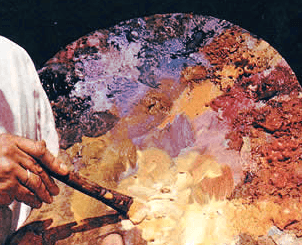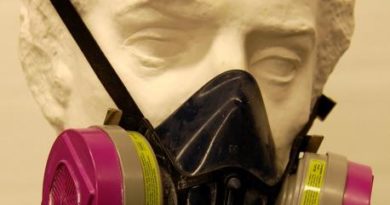Using Natural Oil Mediums with Water-Soluble Paints
Sometimes artists purchase water-soluble oil paints in hopes of replacing turpentine, OMS, or other harsh solvents, with water. While this sounds like a great approach, it has a few drawbacks. Very commonly, artists discover that water-soluble paints do not handle in the same way natural oil paints do. The obvious solution seems to be the addition of traditional great-handling natural mediums that are less toxic than turpentine and OMS to the paint – but there are several important considerations necessary in order to do this.
Art Treehouse traditional natural mediums will enhance the quality of most water-soluble paints – however, since natural oils are not water-soluble, an artist will need to work as if the paints were also made from traditional natural oils. Washing brushes using water without soap, or thinning paint with water is not advised, and could actually cause problems with the paint film.
Water-soluble paint manufacturers recommend that you use their own brand of chemically engineered mediums if you plan to thin their paint with water. Manufacturers use several different methods of making their paints water-soluble. Their paint can made by engineering one end of the oil molecule so that it will bind to water, or alternately it can be made by using an emulsifier. This is why a water-soluble manufacturer’s oils and thinners are intended to match the paints they sell under their own brand name.
There may be a reason to avoid any water-based additive that would speed up the drying process of water-soluble paints. Water evaporates – it is not a paint binder. According to one source, “There are many documented issues with accelerator products in this category causing cracking and damaging the archivability of the medium.” https://en.wikipedia.org/wiki/Water_miscible_oil_paint. In contrast, natural oils have passed the test of time in regards to drying and archivability.
In sum, if an artist decides to use traditional natural mediums with water-soluble paints, the water-soluble part of the process will be lost, but the handling characteristics of natural oils will be gained. If an artist uses traditional natural mediums with water-soluble paints, the brushes can be cleaned with soap and water, and the paint can be thinned using Oil of Spike Lavender, Walnut or Linseed-Flax oil, or Biobased Artist Thinner, all of which are far less toxic than turpentine or OMS.




